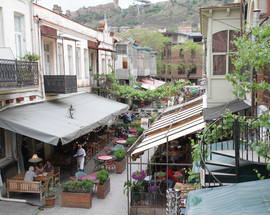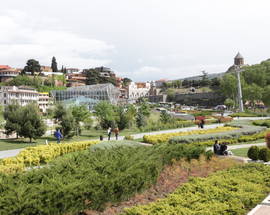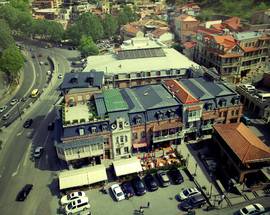Tbilisi City Guide
The architecture marks a march from antiquity through eighteenth century balconied homes to austere Soviet structures, right up to the ultra modern. The old is not overly polished. Many cities renovate to the point where buildings and entire districts lose any sense of authenticity, and while that has happened to a limited extent, especially in the section of the Old Town around the slopes of Narikala Fortress, thankfully, huge portions of the city remain untouched by over-zealous restoration schemes. There are acres of tired, graceful, old buildings with cracked walls, decades of layers of paint fading and peeling. Quaint homes with precariously leaning balconies and ancient wooden doors leading to courtyards with family biographies dating back centuries.
Tbilisi is refreshingly unpretentious. Big-business logos don’t dominate its street-scene like in many western cities. There is a smattering of international brands but it hasn't yet been swamped by the corporate homogeneity that has ruined the individuality of many capitals. So far this tough old city still has its pride. And all the better for it.






